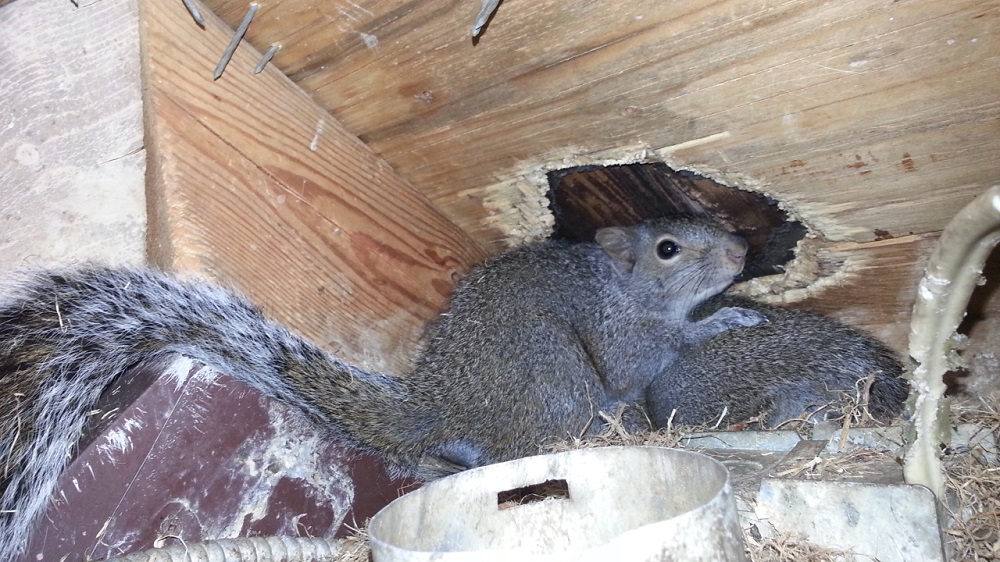Squirrels can be cute and funny critters, and most people enjoy having them around. However, despite their entertaining demeanour, squirrels, like most wildlife, can be destructive given the right set of circumstances. For example, as a nesting animal, squirrels look for the most secure environment to build their homes, while that often means trees, your rooftop can also look appealing. When trees are close to houses and roofs are not adequately protected, a squirrel or squirrel family can make their way into your roof or attic, which then requires the expertise of our squirrel control services in Oshawa.
While wildlife control can typically resolve the problem quickly, many homeowners baulk at the possible expense of removal, choosing instead to perform a DIY repair on their roof. Beware, though — there is no more significant mistake in squirrel control than sealing off a squirrel nest too soon. To avoid common problems, it’s important to understand why you should avoid sealing squirrel holes and how professionals seal areas without causing further issues.
Why You Never Want To Seal Squirrel Holes on Your Own
The primary reason you need to avoid sealing a squirrel hole on your own is that you may inadvertently seal a wild animal into your house. When the squirrel hole or holes are sealed, the animals have no way to get out of your property and become trapped in your ceiling or walls. Eventually, the defenceless critter may starve and die, which will result in a significant and pungent odour throughout your home.
If you are somehow lucky enough not to trap any animals in your house, then you risk aggravating them. When a squirrel returns from collecting food for the day, it will not appreciate its hole being sealed. While you may assume that the animal would just choose the path of least resistance and find a new home, you would be wrong. The squirrel is more likely to search for other weak points in your structure, finding a new access point to its nest.
How Professionals Can Seal the Area Correctly
Animal removal professionals ensure that wildlife is not trapped inside before sealing. When wildlife control specialists arrive on the scene, they will use their expertise and training to scare the mother out of the location. They will them install one-way doors over the exit point. Once all the babies are safely removed our wildlife technicians monitor the mother who will take each baby one by one to a new den away from your home.
After removal, the professionals work with you to ensure that squirrels never nest in your property again. They can use several tactics to prevent animals from nesting in vulnerable spaces:
- Sheds: To help prevent nesting under sheds, the wildlife control company may suggest digging a trench to place wire mesh around the foundation of the shed. Then the trench is backfilled, creating a wire deterrent for digging.
- Roof: To eliminate the risk of future nesting squirrels, you should inspect your roof. Replace any damaged areas and install proper vents.
- Chimneys: Squirrels sometimes get trapped in chimneys, which can have the same adverse effects of sealing them in their holes. To prevent this, install chimney caps and vents.
- Vents: Many homes have vents along the foundation and roof of the property; to keep animals out, install vent caps. Make sure to have caps on dryer venting as well.
Do you suspect you have a squirrel residing in your attic or somewhere in your home? If so, contact Skedaddle Humane Wildlife Control. Allow the experts to do their job and ensure that your home is wildlife-free, safely and humanely.



